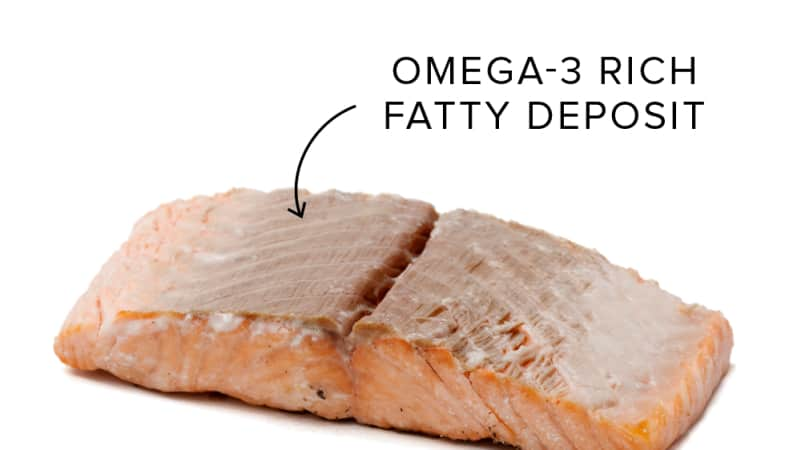When you serve salmon, you want the fish to be not only perfectly-cooked, but beautiful. We love to dress up our filets with lacquer-y glazes or handsome sesame crusts, and we’ve even nailed down two (easy) fixes for when those unsightly white streaks appear on the fish.
That Gray Stuff on Salmon? It’s Actually Really Good for You
Published June 20, 2022.

But none of these treatments address the other cosmetic problem that salmon can have. Salmon’s bright pink flesh is its calling card, but just below its skin, there is a portion that is gray or sometimes brown. In pursuit of perfectly-pink fish, you might be tempted to remove this flesh along with the skin—but wait. Even if you love to beautify your filets, this is one area you might want to leave untouched. Why? The gray area of salmon is actually one of the most nutritious parts of the fish.
Sign up for the Cook's Insider newsletter
The latest recipes, tips, and tricks, plus behind-the-scenes stories from the Cook's Illustrated team.
What Is the Gray Part of Salmon, and Why Is It So Good For You?
This gray portion of the salmon is a layer of fatty muscle tissue that is low in the pink pigments found in the rest of the fish. This area contains more fat than the rest of the salmon—and it therefore is the most rich in omega-3 fatty acids, since salmon fat is high in omega-3s.
Knowing that the gray part of salmon is the most nutrient dense part of the fish makes a convincing argument for keeping this layer on your salmon—but what if it impacts flavor? We ran a quick side-by-side taste test to find out.
Taste Test: Does the Gray Part of Salmon Affect Flavor?
To find out, we oven-roasted several filets of salmon, then removed the gray portion from half of them and left it intact on the others. We then instructed a panel of tasters to taste the samples blind.
The result? Only a few discerning palates noticed that the samples with the gray substance had an ever-so-slightly fishier flavor. Most couldn’t tell the difference.
So, if you really want to remove the gray portion of your salmon, it’s easy enough to do so by peeling off the skin and scraping it away with the back of a knife. But your salmon won’t taste much different if you leave it on—and you’ll be consuming more omega-3 fatty acids to boot.



